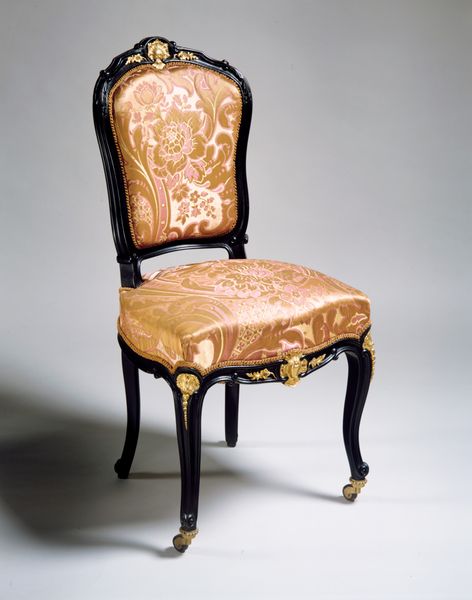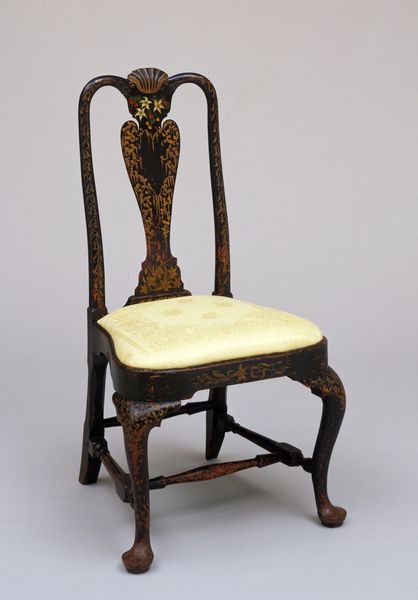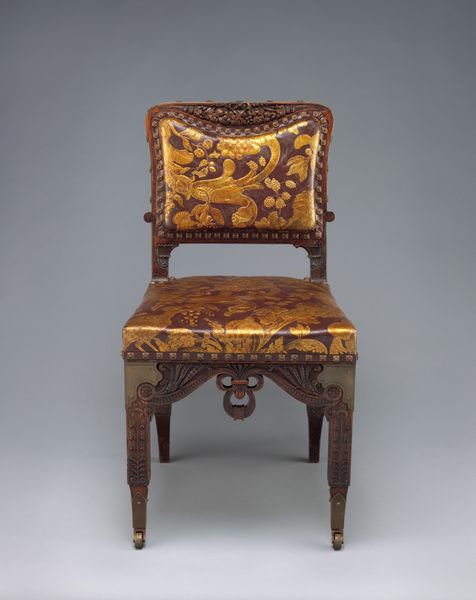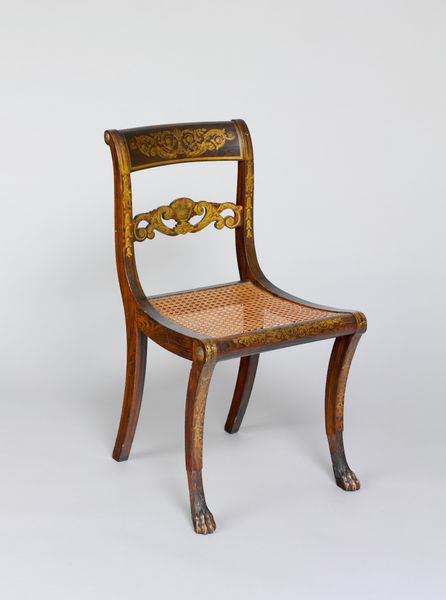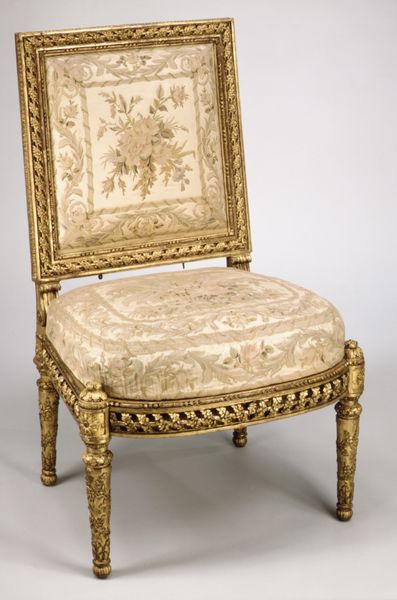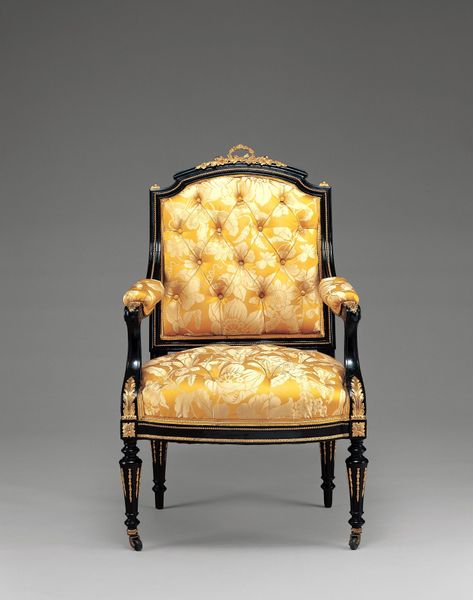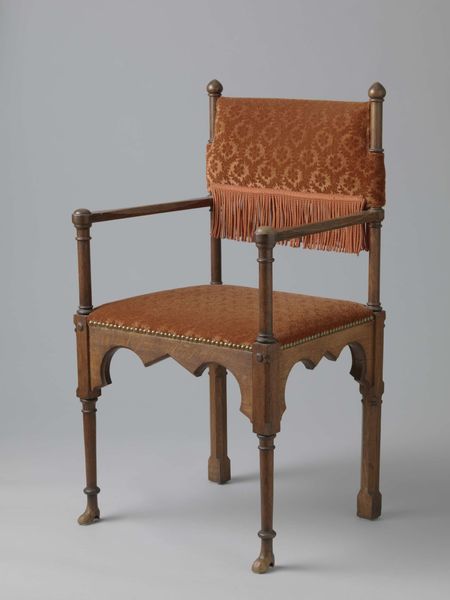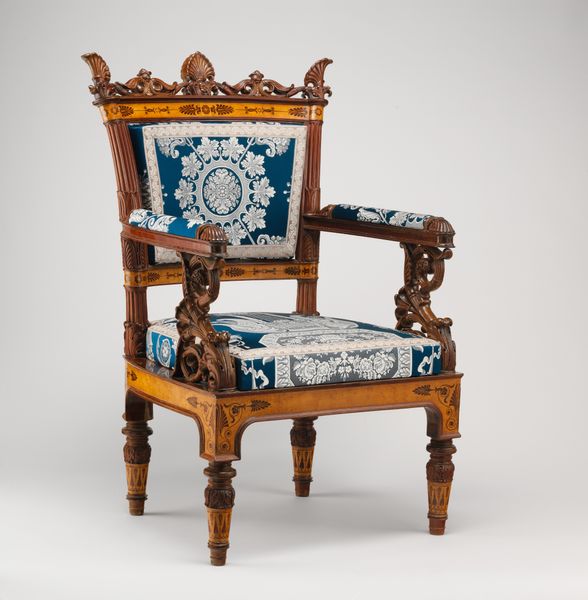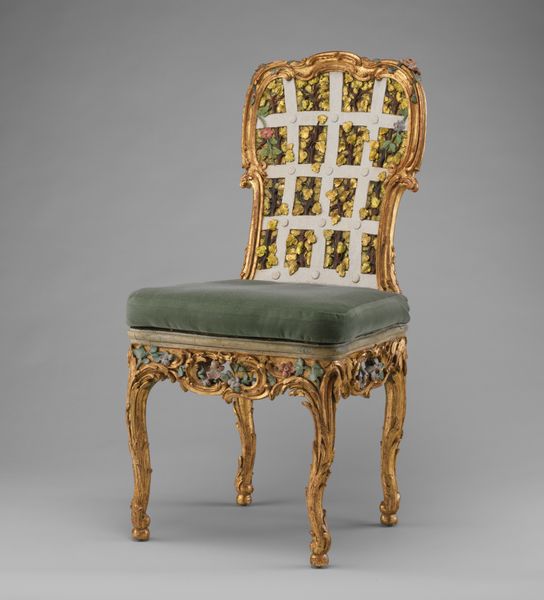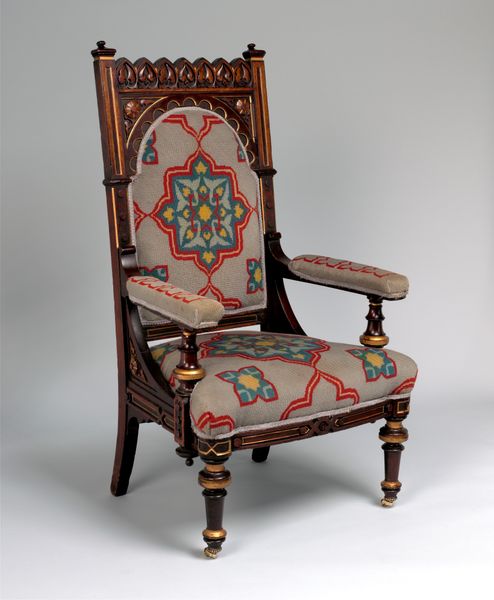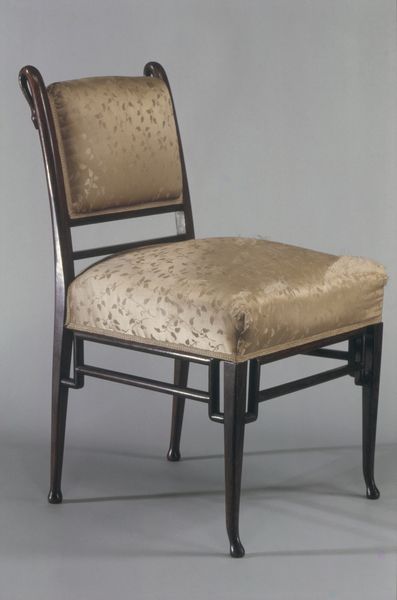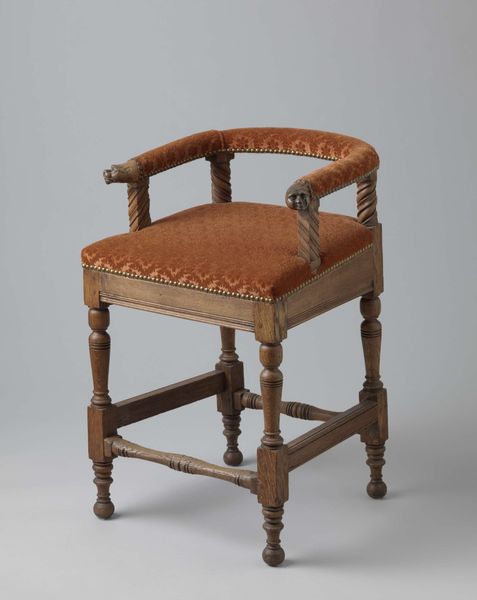
carving, sculpture, wood
#
carving
#
sculpture
#
furniture
#
classical-realism
#
sculpture
#
wood
Dimensions: 32 7/8 x 19 x 19 in. (83.5 x 48.26 x 48.26 cm)
Copyright: Public Domain
Curator: This is a side chair from around 1830, currently residing here at the Minneapolis Institute of Art. What strikes you about its form and presence? Editor: Immediately, the decorative finishes catch my eye. The mottled faux-tortoiseshell paint effect contrasts intriguingly with the clean, almost austere, lines. There is an unusual duality here. Curator: Indeed. Think about where this chair might have lived. That fruit motif, rendered in gold, along the crest rail speaks to abundance and hospitality, traditional symbols deeply embedded in the domestic sphere of the time. Editor: And the craftsmanship… examine the details of the carving, even the relatively simple shapes, they all have a kind of visual logic, creating visual texture. Notice how the composition flows in a logical manner between upper section, the horizontal back slat, woven seat, and finally the lower stretchers and legs. The chair adheres to clear structural relationships. Curator: The deliberate classical details – the anthemion motifs, the gilded accents – echo the wider fascination with antiquity at the time, which suggested refinement, virtue and elevated status. So, it isn’t just a piece of furniture, but an indicator of aspiration. Editor: But those references are mediated through local styles. A chair like this could have been a very specific display, indicating someone who knew history, maybe philosophy, certainly culture. The finish almost mimics stone or marble as well, further amplifying the ancient motifs, the tortoiseshell is especially interesting. Curator: What I find interesting is how these familiar motifs gain new meaning in this new context, domestic and humble. In this setting they subtly shaped identities, reflecting ideals. The symbolism permeates. Editor: From a purely formal standpoint, this piece fascinates me precisely because of this interplay—ornament against austerity, texture against a relatively clean form, classicism reworked into an entirely new vernacular expression. A true object of contradiction, successfully unified. Curator: Ultimately, a chair designed not only for practical use but to articulate something about its owner’s place in the world. Editor: I see more now. It certainly sits better than it initially appeared.
Comments
minneapolisinstituteofart about 2 years ago
⋮
Painted furniture has been popular in America since first settlement. Objects like this painted chair were usually referred to as "fancy" at the time because of the fanciful patterns and faux finishes used to decorate them. In this fancy chair, wet yellow and green paint was smoke-grained or exposed to the smoke of a candle, resulting in sooty, almost cloudlike shapes. Decorative painters up and down the east coast admired and copied the technique. The decoration of this tour de force chair is enhanced with stenciled and freehand decoration imitating fruit, anthemia, and brass buttons.
Join the conversation
Join millions of artists and users on Artera today and experience the ultimate creative platform.
